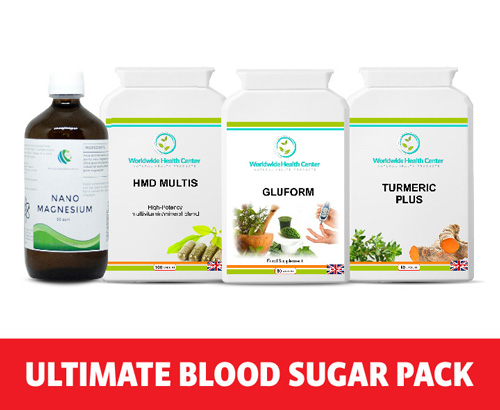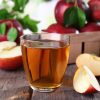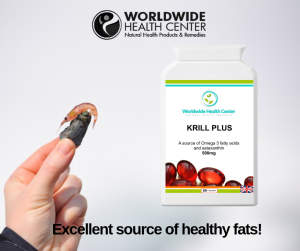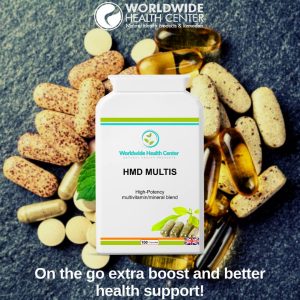Need help? Email us:
- AMINO ACIDS
- Antioxidants
- Blood Sugar Regulation
- Bone and Joint Repair
- BOOKS
- Brain Food & Energy Supplements
- Candida Support
- Cardiovascular Support
- Cholesterol
- Constipation Relief
- Dental Health
- Detox
- Digestive Support
- Eye Support
- Fatty Acids
- Gut Health
- Hair Mineral Analysis
- Heavy Metal Detox
- Herbal Tinctures
- Immune Support
- Liver Support
- METABOLIC TYPING
- Multivitamin & Mineral
- Natural antimicrobials and parasite remedies
- Natural Diuretic
- Probiotics
- Prostate Health
- Tachyon Products
- Uncategorized
- VITAMINS
- WEIGHT LOSS
Nutritional Deficiencies

Nutritional Deficiencies
Nutritional deficiencies can cause countless ailments and diseases. However, eating the proper foods and supplementing certain nutrients can reverse poor health and reduce your risk of illness.
A recent news report indicated that the health insurance will likely increase by 25% in 2017.
In the past 60 years, the percentage of the population suffering from a chronic disease has risen from 10% to over 60%.
In 2010, the National Cancer Institute did a study of more than 14,000 people, aged 2 to 80, and could not find one person with a truly healthy diet. In fact, a vast majority of these people were deficient in 11 out of 14 nutritional categories.
The obvious answer is that most people are just not eating enough of the right foods, and our medical profession is doing a terrible job of preventing illness. It’s just not what they do. What are the reasons?
- Doctors do not get good nutritional education.
- Schools provide inadequate nutritional education.
- The USDA Food Pyramid is seriously flawed.
- Doctors treat symptoms of disease, not the causes.
- The diagnostic tools used are woefully inadequate.
- People adopt poor eating habits very early in life.
- Farmers are growing food that is nutritionally deficient.
- Food companies over process most of their products.
What are the most dangerous nutritional deficiencies?
Many nutritional deficiencies should concern us all, but there are ten that deserve some immediate attention by most people:
- Vitamin D3
- Vitamin B
- Iodine
- Omega 3 fats
- Enzymes
- Magnesium
- Vitamin C
- Lutein
- Coenzyme Q10
- Vitamin E
There are a number of tests that will determine nutritional deficienceis in any of these key nutrients. Sources for these nutrients may be found in the foods we should be eating as well as in nutritional supplements that have been scientifically proven to contain equivalent nutrients.
- Vitamin D3– This nutrient is deficient in 50% of the population generally, and is even higher in places where the sun does not shine very often. Populations living in northern locations have much higher vitamin D3. It is important for the development of teeth and bones, the protection of the heart, and the prevention of Type 2 diabetes. Perhaps its most important role is in the prevention of cancer. Vitamin D3 turns off genetic expressions for cancers in hundreds of genes, including those involved in breast cancer and prostate cancer. Scientific studies have shown that high levels of vitamin D3 reduce the risk of breast cancer by 77% and prostate cancer by 83%.
Some common Vitamin D deficiency symptoms include insomnia, easy bruising, delayed wound healing, chronic diarrhoea, nosebleeds, frequent fractures, teeth or bone heartbeat.
Some of the best sources of Vitamin D include the following: sunshine or bare skin, egg yolks, milk (preferably goat or sheep), Fish liver oils (e.g., cod), sardines, herring, salmon, halibut and mackerel.
Daily requirement –Can range from 1,000 IU to 10,000 IU/day.
- Vitamin B – There are several different B vitamins, and we need all of them. They include vitamin B1, B2, B3, B5, B6, B12, folate, and biotin. Very few people do not have a deficiency of one or more of the key B vitamins. This is illustrated by the crucial role they play in the development of hormones, neurotransmitters, and other biochemicals. Vitamins such as B6and B12 play a key role in the methylation process, which involves breaking down amino acids to make biochemicals. Without these two nutrients, people will experience many illnesses, including heart disease, cancer, mental challenges, and even sexual disorders.
Some common Vitamin B deficiency symptoms include lack of energy, sexual dysfunction, mental/emotional challenges, insomnia, poor appetite, digestive problems, poor skin, and nail or hair development.
Some of the best sources for B vitamins include: fish, nuts, whole grains, eggs, beans, dark leafy vegetables, poultry, cabbage, broccoli, brown rice and sea vegetables.
Nutritional deficiencies of B-vitamins can appear in the nails. Brown-grey nails may be a sign of vitamin B-12 deficiency. Beads that seem to drip down the nail bed like wax is an indication of vitamin B deficiencies.
- Iodine – Iodine is found in every tissue in the body, and it is thought that up to 40% of the worldwide population is deficient in iodine. It is particularly important for the function of a healthy thyroid, and has been implicated in many diseases, including cancer.
Some common iodine deficiency symptoms include dry mouth, chronic skin infections, dry skin, fibroid development, and reduced mental alertness, sensitivity to cold and stuffy sinuses.
Best sources of iodine: Unprocessed sea salt, Seaweed, Kelp, Spirulina, Shrimp, crab, lobster, eggs
- Omega-3 fats – Omega-3 fats are vital to our health and are found in high concentrations in certain fish, as well as in various nuts and seeds. Omega-3 deficiency is ranked as the sixth leading cause of disease, but is primarily associated with cardiovascular disease and brain illnesses, such as depression and Alzheimer’s. Salmon is the most popular source of omega-3 fats, but sardines and krill oil offer even higher concentrations.
Omega 3 fats are inflammatory while omega 6 fats are inflammatory.
The ideal ratio of these two omega fats is 1 to 1, but the ratio in the typical Western diet is 1 to 20, because people are getting too many omega-6 fats from fried and processed foods.
The ideal daily allowance for these two forms of omega fats are:
Omega-3 = 600 mg/day
Omega-6 = 110 mg/day
Some common omega-3 deficiency symptoms include dry skin/eczema, poor memory, high cholesterol, high blood pressure, depression or anxiety, arthritis, poor exercise, dry eyes or grit in eyes, dry hair.
Some of the best sources of omega-3 fats: Salmon, walnuts, tuna, flaxceed, hemp seeds, herring, borage oil, black currant seeds, pumpkin seeds, sardines

- Enzymes – Enzymes are primarily reactive or catalysts, meaning that they cause things to happen biochemically in the body. They can be useful in the digestion and assimilation of food, the neutralizing of germs, and the removal of things like arterial plaque or fibroids. Many enzymes are found in raw fruits and vegetables, while cooking these foods destroys virtually all of the enzymes. Some enzymes are derived from the fermentation of bacteria, such as nattokinase, made from soybeans, or serrapeptase, derived from silkworms. These “specialty” enzymes are less known for their role in digestion and better known for their role in the reduction of arterial plaque or the dissolving of fibroids.
Our bodies make some digestive enzymes naturally in the pancreas, but this process declines over the years as a part of the aging process. By some accounts, as much as 50% of natural enzyme production declines by the age of 50. That is why some people decide to supplement with enzymes in order to assist in the digestion process. This is especially needed for food that has been cooked.
Some common signs of enzyme deficiency: excessive gas, colitis or irritable bowel syndrome, bloating after meals, poorly formed stools, stomach or bowel pain, constipation, chronic heartburn, fatigue after exercise, eczema or psoriasis, chronic diarrhoea,
Some of the best sources of enzymes: All raw fruits and vegetables, Fermented bacteria (nattokinase), Pineapple (bromelain), Papaya (papain), Silkworm (serrapeptase)
- Magnesium – Magnesium may be the most important nutrient of all, due to its crucial role in the prevention of diabetes, heart disease, obesity, and every known brain disorder.
There are more than 3,700 sites on human protein cells where magnesium is needed in order to promote detoxification, produce antioxidants, such as glutathione, and transport insulin and glucose into every cell to make energy. And, while magnesium is the fourth most abundant mineral in the body, more than 80% of us suffer from a magnesium deficiency. When magnesium is not at sufficient levels, people can experience heart attacks, diabetes, depression, strokes, and much more.
The average adult needs about 500 mg of magnesium every day, but for those who exercise, this requirement could be five or ten times higher, depending on the intensity and the duration of the exercise. Many athletes or weekend warriors are unaware of this need for higher levels of magnesium and experience dire consequences as a result.
Some common magnesium deficiency symptoms: Muscle cramps, insomnia, muscle weakness, nervousness, constipation, irregular heartbeat, depression or anxiety, weak bones, high blood sugar.
Some of the best sources of magnesium: Whole grains (not wheat), Green vegetables, Brazil nuts/almonds, beet greens, blackstrap molasses, rice bran, seeds (fennel, poppy, cumin) and beans
- Vitamin C – Vitamin C is the most broad – spectrum antioxidant from external sources which means that internally produced antioxidants, like glutathione, may be more widely utilized, but of those consumed as food, vitamin C is the leading nutrient capable of neutralizing toxins known as free radicals. In that regard, vitamin C is crucial to our immune system and is capable of preventing colds in small doses and treating cancer in larger doses. There is scientific evidence to support both benefits.
The recommended daily allowance for vitamin C is 60 mg, but this will only help in cases such as the prevention of scurvy. It is really a minimum daily allowance, and most scientists agree that about 2,000 mg are needed daily to prevent chronic illness. Larger amounts of 10,000 mg or more have been used orally to treat illness, while 50,000 mg or more intravenously have been used for cancer.
Some common vitamin C deficiency symptoms: Frequent colds or flu, Buildup of arterial plaque, Frequent infections, Delayed wound healing, easy bruising, bleeding or tender gums, arthritis or joint pain, lack of energy or chronic fatigue
Some of the best sources for vitamin C: Berries of all kinds, cherries, citrus fruits, tomatoes, kiwi, and broccoli.

- Lutein– Lutein does not usually appear on the list of important nutrients, but that is a big mistake. Lutein, vitamin A, and zeaxanthin are crucial carotenoid nutrients for the health of our eyes. Lutein is found in leafy green vegetables, as well as deep orange and yellow vegetables. Although there are more than 600 different foods in the world known as carotenoids, only about 20 of them are deposited in large quantities in the eyes.
Lutein and zeaxanthin fight free radical damage in the eyes, slow the development of cataracts, and generally prevent macular degeneration. Lutein is also valuable in the protection of our skin, the prevention of diabetes, and the prevention of cancers, including breast and colon cancer.
Some common lutein and zeaxanthin deficiency symptoms: Blurred vision, frequent polyps in the colon, poor night vision, signs of skin aging or damage, deteriorating eyesight, persistently high blood sugar levels, high inflammation levels, Build-up of plaque in arteries.
Some of the best sources for lutein and zeaxanthin: Orange bell peppers, egg yolks, kale and spinach, broccoli, kiwi fruit, romaine lettuce, zucchini and squash, turnips and collard greens.
- Coenzyme Q10 – This is another nutrient that is not usually on a list of very important nutrients, but it should be. CoQ10plays a crucial role in the production of energy in the mitochondria of our cells, as well as the protection of the nucleus, which contains our DNA. While some people get good amounts of CoQ10 in dairy and meat, they also get saturated fat and cholesterol, which produces inflammation and causes the build-up of arterial plaque.
While some CoQ10 is produced in the body, it is usually not enough to meet our daily needs, especially if we reduce our consumption of dairy and red meat. CoQ10 is most needed by organs with fast metabolism, such as the brain, the heart, the liver, the kidneys, and the lungs. For this reason, CoQ10 has been proven to prevent diseases associated with these organs, as well as reversing these same diseases in many cases. In one study, 50% of patients on dialysis were able to get off their kidney support machines by taking 180 mg/daily of CoQ10 for three months. Similar results have been shown in studies on heart disease, liver disease, and even Parkinson’s disease.
Some common CoQ10 nutritional deficiency symptoms: Muscular weakness, chronic fatigue, heart rhythm disturbances, poor kidney function, increased infections, accelerated skin aging, high blood pressure, bleeding or receding gums.
Some of the best sources of CoQ10: Organ meats (liver, kidneys), spinach, broccoli, grass-fed beef, sardines, cauliflower, mackerel and poultry.
- Vitamin E – Vitamin E is an oil- based antioxidant that is valuable to every cell, but particularly to cells in the brain and the heart. It is the membrane of the cell that is often damaged by free radicals, such as toxins. Vitamin E not only neutralizes free radical damage; it also makes the cell membrane softer and better able to transport nutrients into the cell and waste out of the cell. It also helps to recycle its antioxidant partner, vitamin C, which makes these two antioxidants a dynamic duo.
Some common vitamin E deficiency symptoms: Swollen legs or ankles, easy bruising, Exhaustion after light exercise, Tendency to form blood clots, Lack of sex drive, Loss of muscle tone, Cold hands or feet, Slow wound healing
Some of the best sources of vitamin E: Whole grains (not wheat), green vegetables, walnuts, pecans, almonds, hazelnuts, sunflower seeds, omega oils, olive oil, eggs and oatmeal.
Important Links

Dr. George J. Georgiou
Dr. George J. Georgiou, Ph.D., N.D., D.Sc (AM), M.Sc., B.Sc, is a world-renowned expert in the field of holistic medicine and detoxification. As the inventor of the highly acclaimed Dr. Georgiou's Heavy Metal Detox Protocol, and the main product, HMD™ (Heavy Metal Detox), he has revolutionized the approach to natural heavy metal detoxification. With over 35 years of experience in natural medicine, he has authored 23 books, including the comprehensive guide 'Curing the Incurable with Holistic Medicine,' which offers invaluable insights and over 700 scientific references. Dr. Georgiou's groundbreaking work is sought after by individuals and practitioners worldwide through his Da Vinci Institute of Holistic Medicine and Da Vinci Holistic Health Center based in Larnaca, Cyprus.









